How can you illuminate a shop? Find out which lamps to choose, where to place them, and 7 mistakes to avoid in the design phase!
Commercial lighting has specific needs that differ from residential lighting, so a lighting design project must take this into account.
The choices you make concerning the lighting are not exclusively aesthetic. Extreme caution must also be paid to the technical aspects, which, if neglected, risk compromising the entire project as well as the success of the store in terms of sales.
An optimal color rendering is fundamental, especially where the product is strictly linked to visual perception.
Illuminating a shop does not only mean illuminating the goods on display properly but also outlining the overall mood through the strong expressive value of lighting. A well lit shop attracts an audience and new potential customers.
The aim of this article is to provide useful style advice, technical suggestions, and ideas for decorative lamps that you can take inspiration from for the correct realization of a lighting project in a retail environment, starting with the mistakes you should avoid.
In particular, we will talk a look at:
- How to illuminate a shop: what kind of shop is it?
- How to illuminate a shop: 7 mistakes you should absolutely avoid
- How to illuminate a shop: aspects to consider
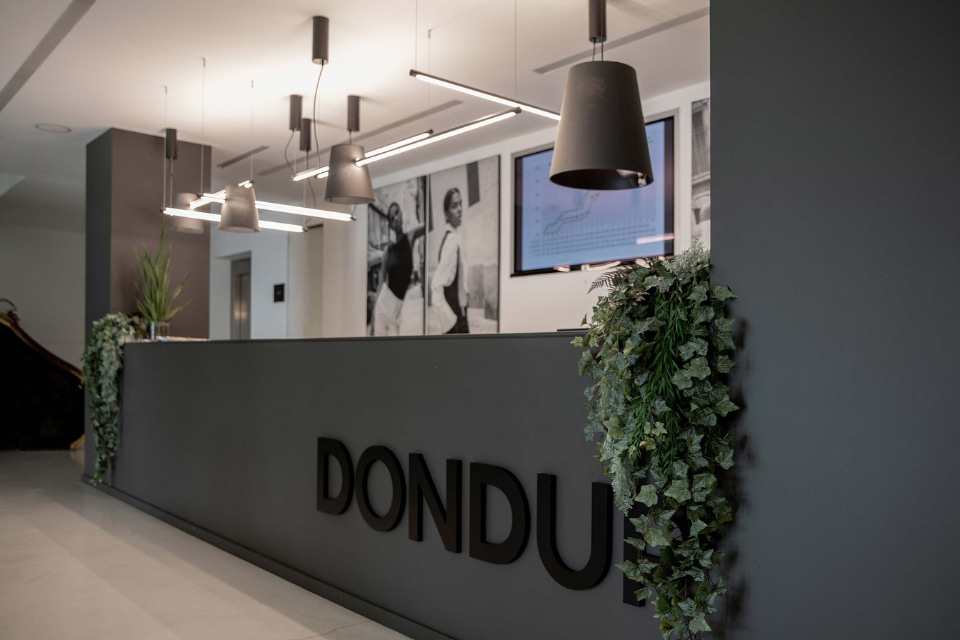
Cupido
How to illuminate a shop: what kind of shop is it?
Before showing you how to illuminate a shop and then analyzing the mistakes you should avoid in lighting design, it is good to make a premise.
In fact, the first question you should ask yourself is: what type of retail space are you doing a lighting design project for?
A luxury store, for example, will have to present a different image of the brand and the products compared to a "more informal" store. The target market in these stores is decidedly different, just as customer expectations are different when they enter the shop.
So, for example, important suspension lamps that create refined light will, in principle, be more suitable in the first case than in the second. An informal shop, on the other hand, requires an "easier" mood and a more energetic atmosphere.
Similarly, a jewelry store will need different lighting than a clothing store.
So, the first step for designing a shop’s lighting is to figure out which market segment the shop is in, what it offers, and who it is aimed at.
How to light up a shop? 7 mistakes you should absolutely avoid
Illuminating a shop is certainly not a simple operation to plan and carry out.
Lighting plays a fundamental role in creating a welcoming, functional, and inviting environment for customers. However, some common mistakes can degrade the customer experience and negatively affect sales. In this guide, we'll explore 7 mistakes you should avoid when illuminating a shop.
From the lack of sufficient light and choosing the wrong lights, to the incorrect placement of light sources, we'll discover how to create effective lighting design to enhance products, evoke emotion, and satisfy customer needs. Avoiding these mistakes will help transform your store into an eye-catching space that promotes a rewarding and memorable shopping experience.
The best retail lighting design projects admit no mistakes of any kind: let's check out the 7 most common design mistakes that should be avoided for if you want your project to be successful.

Nilo
1. Lack of accent lighting
Store lighting is often designed to ensure generic visibility but not focused on specific points.
In fact, in addition to ambient lighting, sources of accent lighting also play a fundamental role in creating the right mood.
Table lamps are a great example of accent lighting for a retail space. These lamps are ideal for illuminating specific areas and for creating welcoming or concentrated atmospheres.
Thanks to their versatility, table lamps are a practical and aesthetic complement to any interior space. Two examples of light points expertly distributed in the corners of the room can be:
- Bacco, a refined table lamp in frosted glass in the shape of a bottle;
- Ti . Vedo, a curious white ceramic owl that will look at customers with its bright eyes.
This type of lamp will help to better illuminate the whole area and to place emphasis on design objects, clothing, and accessories on shelves, racks, and in showcases.
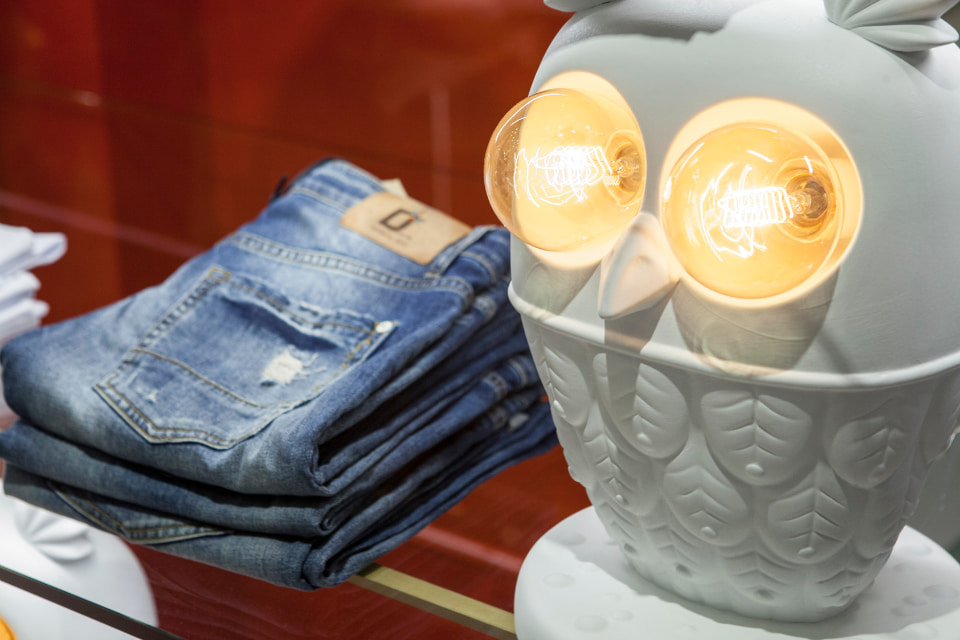
Ti . Vedo
2. Contrast of neutral lights and low visual impact
The incorrect lighting of the various departments and the slightly stimulating contrast between warm and cold lights, as a whole, could ruin the atmosphere of the store, making it appear cold and aseptic, and consequently compromising the customer experience.
A dim and dull environment certainly does not invite customers into the store or to make purchases. To attract the public and potential buyers it is necessary to attract the observer's gaze through the lighting.
Suspension lamps could be an ideal solution for your shop. Alternating several suspensions could give life to a composition of great impact and excellent aesthetic performance. Here are some examples of suspension lamps that Karman can offer:
- Domenica, with persuasive warm tones, becomes a symbol of celebration and serenity;
- Cubano, to introduce a focal accent point and, at the same time, a creative design accessory;
- Alì e Babà, to play on both the luminous and material contrast.
With these lamps, it will be easier to play with the contrast between different gradations of light and different color temperatures, and give your place the right atmosphere for customers.
3. Incorrect lamp positioning
To illuminate a shop and retail environments, detailed knowledge of the configuration of each department is required.
The light points create a bright path, guaranteeing an excellent view of the spaces and outlining a path capable of guiding the customer and facilitating orientation within the store.
To carry out this important task, it could be useful to use suspension lamps, such as Le Trulle e Wow!. They will provide a directional and uniform light to any environment.
If the concept of the store and the type of items offered go well with the industrial style, Mek and Nando would be perfect both as lighting sources and design accessories.
Finally, a chandelier with a refined look like Déjà-Vu will combine a decorative character and an excellent lighting capacity, and will be suitable for giving light to both large spaces and small areas.
4. Gradations and light temperatures not suitable for the context
Light has the power to connect the observer to a place: choosing a light gradation in contrast with the mood of the environment would not only weigh down the atmosphere, but clash on an aesthetic and visual level.
Therefore, to understand how to illuminate a shop, it is good to know how to distinguish between warm and cold temperature lights, whose gradations can influence the emotional state of the observer in different ways.
Cold lights fill spaces with white and bluish tones, outlining a stimulating climate full of vibrations. While sources of warm light emit bright red, infusing a feeling of warmth and comfort.
A suspension with a total white look like Gangster, made of glossy white ceramic (available with bronze interior), optimally illuminates spaces, creating an energetic atmosphere.
With Black Out, a suspension in white fiberglass filament, the spaces are filled instead with warm light and the environment is intimate and welcoming.
5. Inconsideration of natural light sources
Artificial light illuminates environments in the absence of natural lighting or when it is insufficient. On the contrary, sunlight adds that fresh and luminous touch that not all lamps are capable of conferring.
If the shop already enjoys good natural light, it is advisable not to overdo it with artificial lamps and light points but rather to find the perfect integration between natural light and artificial light.
Our advice is to choose a lamp model that can interact harmoniously with natural light without weighing down the atmosphere or being bothersome.
A suspension like Ginger, in this regard, could be an excellent solution. It is a glass lamp with a retro taste that fits harmoniously into any environment. It serves as both a decorative element and an excellent source of lighting. With Ginger the light penetrates the glass and dances around the room, providing uniform lighting.
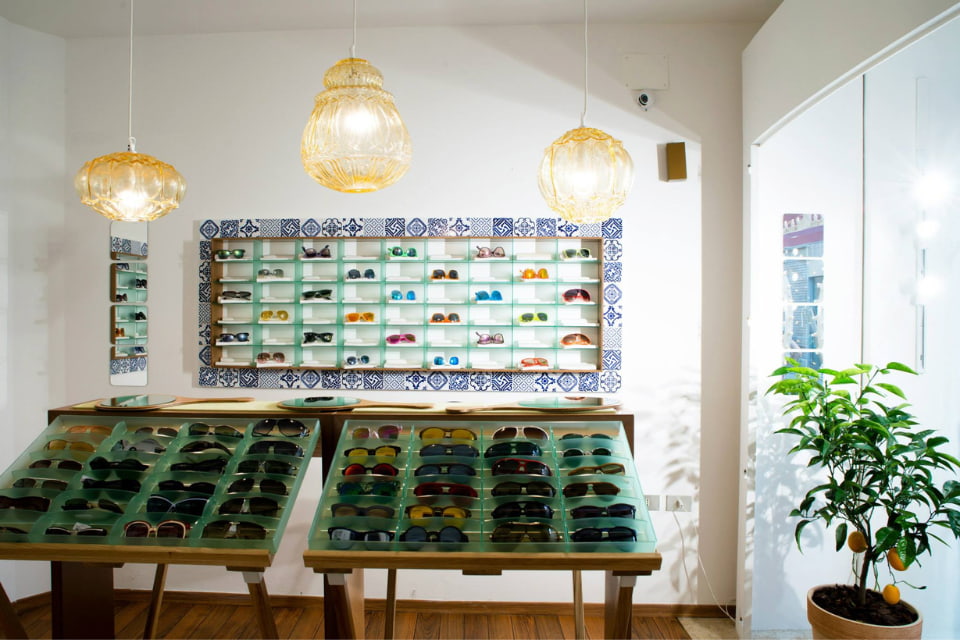
Ginger
6. Poor lateral and floor lighting
Vertical light guarantees optimal gradations of ambient lighting throughout the store, while the sources of lateral and floor lighting are ideal for accent lighting.
Not introducing solutions of this kind means giving up the essential visual components for the aesthetic and functional rendering of the store.
In this sense, it is possible to opt for different solutions. You can choose a lamp like Notredame, placed on the floor, or a floor lamp like Tobia. Alternatively, you could use a wall lamp such as Work in Progress.
They will be able to replenish spaces with concentrated lights at several strategic points and decorate the shop as real creative design elements.
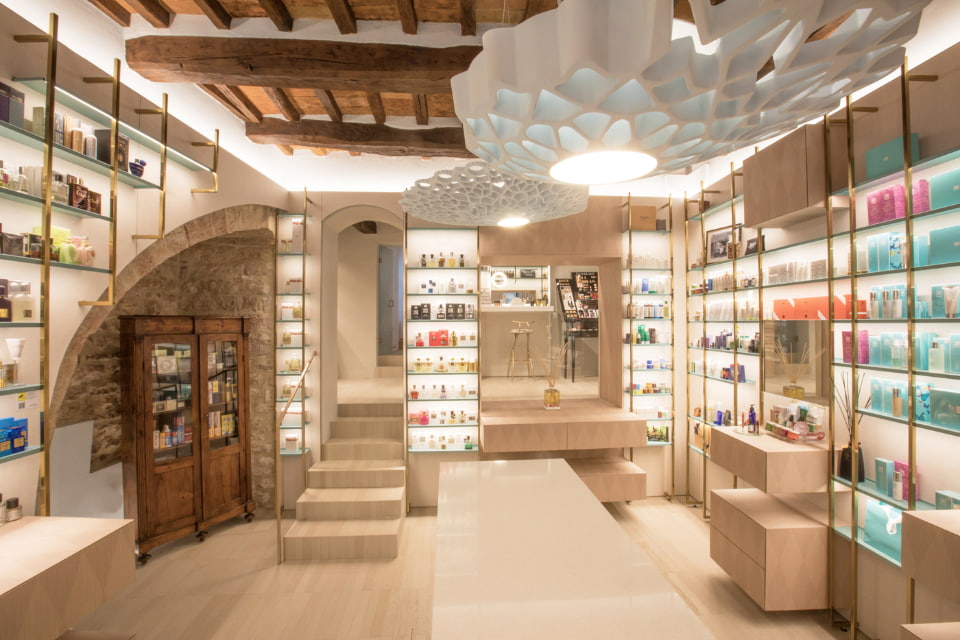
Notredame
7. Incorrect consideration of lamp materials
The luminous capacity of the lamps depends both on the color temperature of the bulb and the material with which the lampshade was made. Do you want to illuminate a shop directly or with soft and filtered light?
In order to avoid mistakes and risking illuminating areas of the room incorrectly, it is good to take into consideration the materials that cover the structure of the chosen lamps.
Lamps with a glass shade (for example, 24 Karati) or cloth allow light to filter through. Other types of lamps, covered with more compact and robust materials, such as ceramic and concrete, "cage" or reflect the light, directing it onto surfaces.
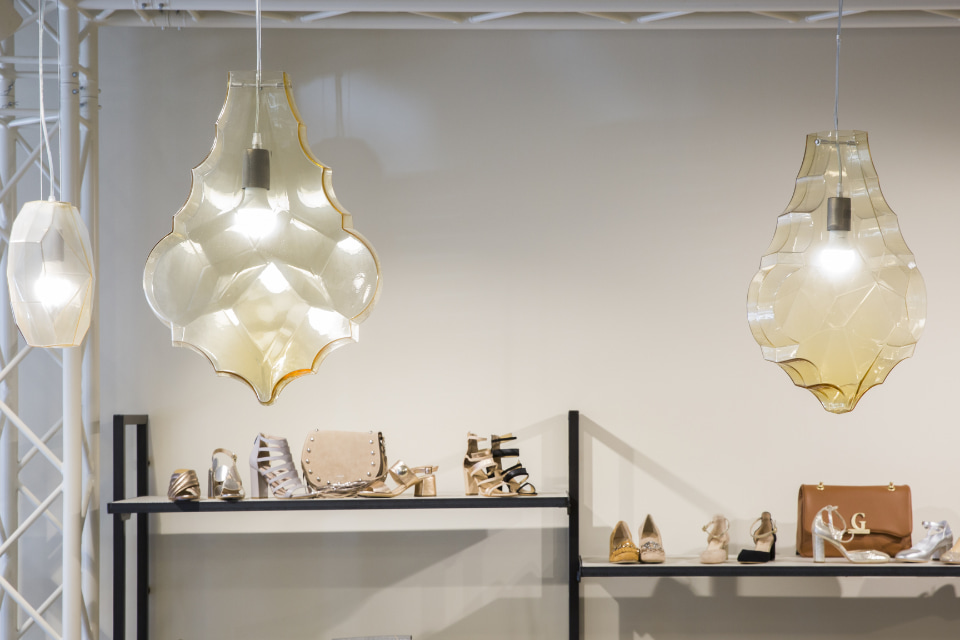
24 Karati
How to light up a shop? Aspects to consider
Illuminating a shop and carrying out a lighting design project for retail spaces means taking care of the aesthetic and functional aspect of the entire environment in detail. It is very important to combine the stylistic concept and technical value through lighting design solutions with a decorative and performing character.
Therefore, it is about finding the perfect balance between technical lighting and decorative lighting. It is essential to avoid making trivial mistakes and to guarantee comfort and a clear and defined personality in the shop. The perfect lighting will entice your customers to stay longer, come back, and shop.




